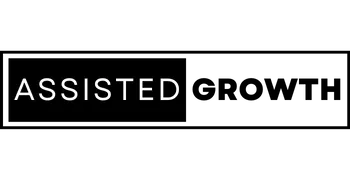
The Power of Paid Advertising: A Comprehensive Guide for Beginners
Introduction
The digital era has completely transformed the way businesses interact with customers. In the midst of this revolution, paid advertising has emerged as a powerful strategy to reach out to potential customers, boost visibility, and drive revenue. Whether you're an established business or a startup, understanding the basics of paid advertising can be a real game-changer.
What is Paid Advertising?
Paid advertising is a digital marketing strategy where businesses pay to have their ads displayed on digital platforms such as search engines, social media platforms, or other websites. These ads can take several forms and appear in different locations, but the common goal is to reach potential customers where they already spend their time online.
Types of Paid Advertising
Paid advertising can be broadly categorized into three types:
Pay-Per-Click (PPC): PPC ads are primarily hosted on search engines like Google and Bing. Businesses bid on specific keywords relevant to their product or service, and when users search for these keywords, the ads appear at the top of the search results. You pay each time someone clicks on your ad, hence the name 'pay-per-click.'
Display Ads: Display ads typically appear on websites in the form of banners, images, or text ads. They're often used for brand awareness and reach purposes, capturing the user's attention as they browse different websites.
Social Media Ads: Platforms like Facebook, Instagram, LinkedIn, and Twitter offer their own ad services. Social media ads are highly effective due to the extensive user data these platforms have, enabling highly targeted advertising.
Benefits of Paid Advertising for Businesses
Paid advertising brings a host of benefits to businesses:
Increased Visibility: Paid ads put your business in front of potential customers, enhancing your visibility online.
Targeting Capabilities: You can target your ads based on demographics, location, interests, and behaviors, ensuring they reach the right people.
Scalability: As your business grows, your ad campaigns can scale along with it. The more you're willing to invest, the wider your reach can be.
Quick Results: Unlike organic strategies, paid advertising can deliver immediate results, making it ideal for businesses looking for a quick boost.
How to Get Started with Paid Advertising
Starting with paid advertising involves a few key steps:
Set Clear Goals: Do you want to increase brand awareness? Drive website traffic? Generate leads or sales? Having clear goals will guide your entire strategy.
Define Your Target Audience: Understanding who your customers are will enable you to create ads that resonate with them and choose the right platforms to reach them.
Choose Your Platforms: Select the platforms where your target audience spends their time. Each platform has its strengths, so it's often beneficial to use a mix.
Create Engaging Ads: Effective ads grab attention, communicate value, and inspire action. Spend time crafting your ad copy and visuals.
Set Your Budget: Decide how much you're willing to spend on your campaign. Remember, it's about return on investment, not just the initial outlay.
Monitor and Optimize: Regularly review your campaign performance and make necessary adjustments. This is key to improving your results over time.
Essential Tips for Running Successful Paid Campaigns
Achieving success with paid advertising requires strategic thinking and continuous optimization. Here are some tips to help you along the way:
Embrace A/B Testing: Try out different ad variations to see what works best. This could include testing different headlines, ad copy, visuals, or calls to action.Focus on Quality: High-quality ads are more likely to be rewarded by ad platforms, leading to lower costs and better results.
Use Analytics: Make data-driven decisions by closely monitoring your campaign metrics. This will help you understand what's working and what needs tweaking.
Think Mobile: More and more people are browsing and shopping on their phones. Ensure your ads and landing pages are mobile-friendly.
Understand Your Customer Journey: Different ads will be effective at different stages of the customer journey. Be sure to tailor your strategy accordingly.
Conclusion
Paid advertising can be a powerful tool for driving growth and achieving your business objectives. While it requires an investment, the potential returns can be significant. By understanding the basics and following best practices, you can make the most of your paid advertising campaigns and set your business up for success.
Remember, the most important part of any advertising campaign is to understand your audience and deliver the value they're seeking.
With a customer-centric approach and a willingness to learn and adapt, the world of paid advertising is yours to conquer.
